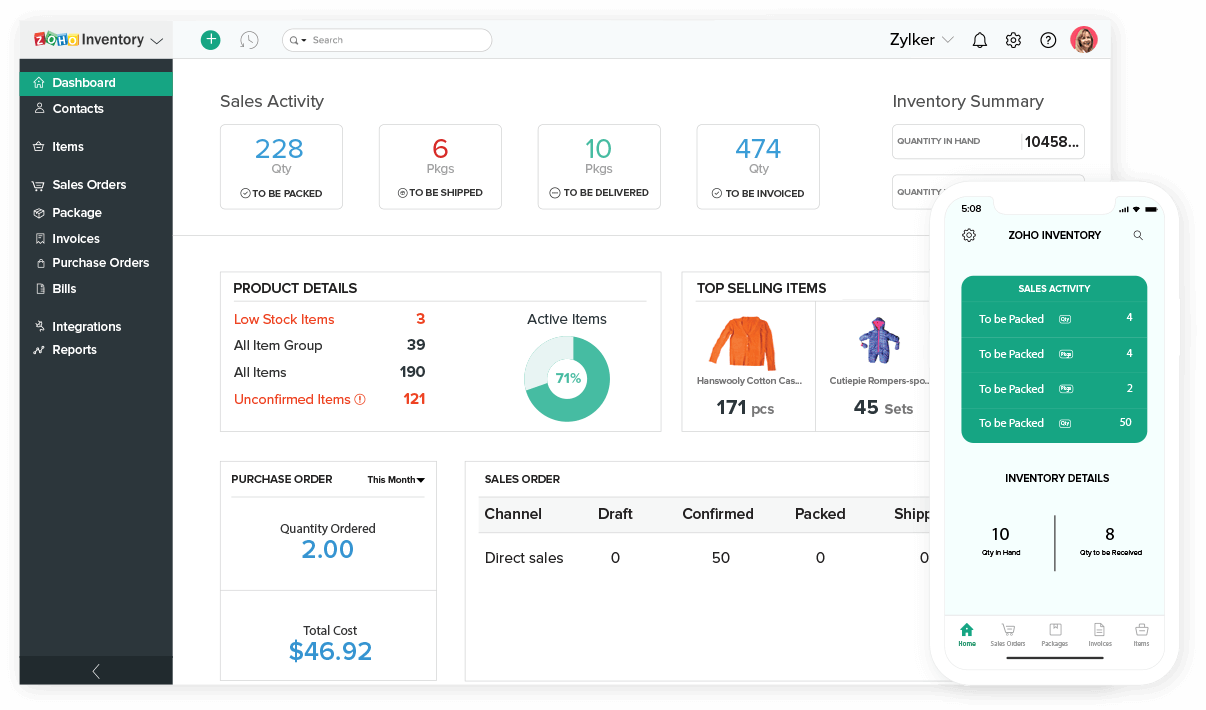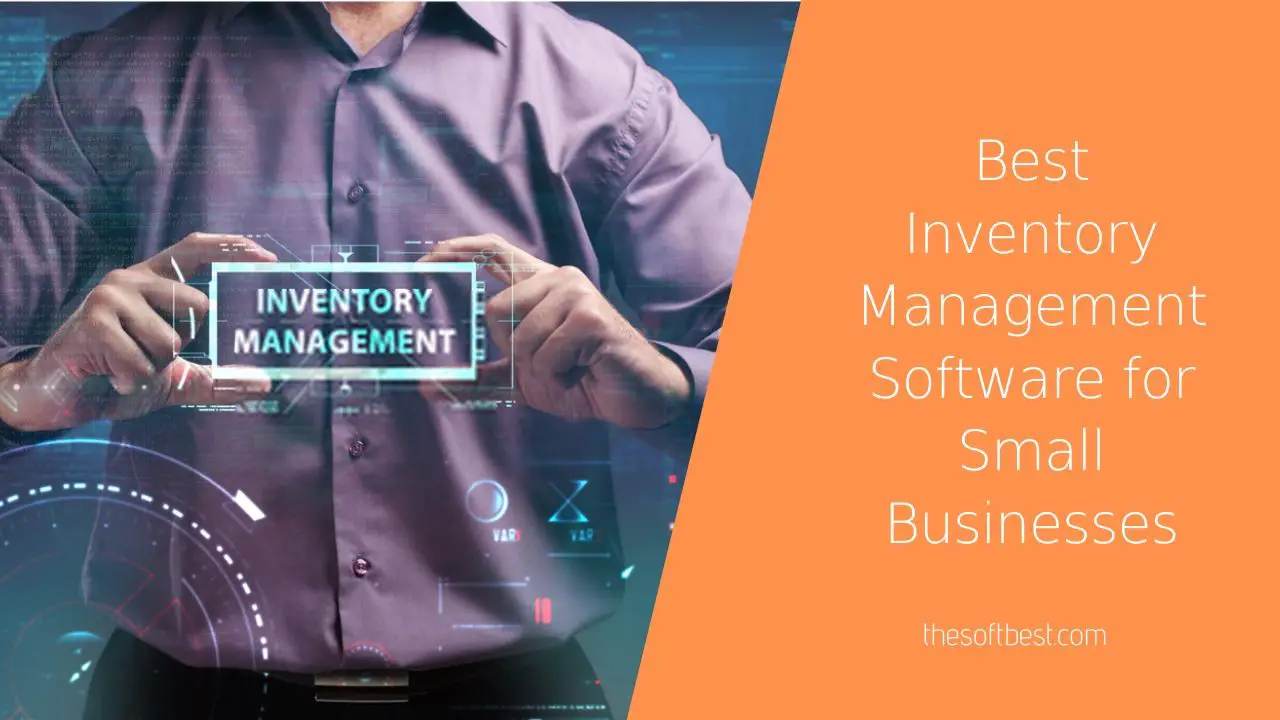Inventory management software for small businesses has emerged as a game-changer, offering a myriad of benefits that can propel businesses to new heights. This comprehensive guide delves into the intricacies of inventory management software, empowering small business owners with the knowledge to make informed decisions and leverage its potential.
By streamlining inventory processes, reducing costs, and enhancing customer satisfaction, inventory management software has become an indispensable tool for small businesses looking to thrive in today’s competitive market.
Understanding Inventory Management Software for Small Businesses

Inventory management software is a crucial tool for small businesses to efficiently manage their inventory, optimize stock levels, and streamline their operations. It offers a range of benefits that can help businesses improve their profitability, reduce costs, and enhance customer satisfaction.
Key features and capabilities of inventory management software include:
- Real-time inventory tracking
- Automatic stock level alerts
- Purchase order management
- Inventory forecasting
- Reporting and analytics
Types of Inventory Management Software, Inventory management software for small businesses
There are various types of inventory management software available, each designed to meet the specific needs of different businesses. These include:
- Cloud-based inventory management software
- On-premise inventory management software
- Open-source inventory management software
- Industry-specific inventory management software
Choosing the Right Inventory Management Software

Selecting the right inventory management software for your small business is crucial for streamlining operations and optimizing stock levels. Here’s a comprehensive guide to help you navigate the process:
Factors to Consider
- Business Size and Complexity:Choose software that scales with your business and can handle the volume and complexity of your inventory.
- Product Types:Consider software that supports specific product categories, such as perishable goods, serialized items, or bulky items.
- Integration Needs:Ensure the software integrates seamlessly with your existing systems, such as accounting, POS, and e-commerce platforms.
- Budget:Determine a realistic budget for the software and factor in ongoing costs, such as implementation and support.
- User-Friendliness:Choose software that is easy to use and navigate for both you and your team.
Step-by-Step Evaluation Guide
- Define Your Needs:Clearly Artikel your business requirements and the specific challenges you want to address with inventory management software.
- Research Options:Explore different software solutions and read reviews from other businesses in your industry.
- Request Demos:Schedule demos with potential vendors to see the software in action and ask questions.
- Test the Software:Take advantage of free trials or limited-time access to test the software’s functionality and compatibility.
- Evaluate Support:Assess the vendor’s customer support options and response times to ensure you have access to assistance when needed.
Tips for Finding the Right Software
- Consider Industry-Specific Features:Look for software that offers features tailored to your specific industry, such as inventory tracking for retail or manufacturing.
- Focus on Functionality:Prioritize software that meets your core inventory management needs, such as stock tracking, purchase order management, and reporting.
- Consider Scalability:Choose software that can grow with your business and accommodate future expansion.
- Read Reviews and Testimonials:Gather insights from other small businesses that have used the software and get a sense of their experiences.
Implementing Inventory Management Software
Implementing inventory management software can streamline your business operations and improve your bottom line. Here are the steps involved in implementing inventory management software:
1. Define your needsBefore you start shopping for inventory management software, you need to define your needs. Consider the size of your business, the types of products you sell, and your budget. You should also think about the features that are important to you, such as barcode scanning, inventory tracking, and reporting.
2. Research your optionsOnce you know what you need, you can start researching your options. There are many different inventory management software solutions on the market, so it’s important to compare your options and find the one that’s right for you.
3. Implement the softwareOnce you’ve chosen a software solution, you need to implement it. This typically involves installing the software on your computer or network, and setting up your inventory data. You may also need to train your staff on how to use the software.
4. Go liveOnce you’ve implemented the software, you can go live. This means starting to use the software to manage your inventory. You should monitor the software’s performance and make adjustments as needed.
5. Best practices for data migrationWhen migrating your inventory data to a new software system, it’s important to follow best practices to ensure that the data is accurate and complete.
- Clean your dataBefore you migrate your data, you should clean it to remove any errors or inconsistencies. This will help to ensure that the data is accurate and complete.
- Use a data migration toolThere are many data migration tools available that can help you to move your data from one system to another. These tools can help to ensure that the data is migrated accurately and efficiently.
- Test your dataOnce you’ve migrated your data, you should test it to ensure that it is accurate and complete. This will help you to identify any errors or inconsistencies that need to be corrected.
6. Best practices for training staffWhen training your staff on how to use inventory management software, it’s important to follow best practices to ensure that they are able to use the software effectively.
- Provide clear and concise instructionsWhen training your staff, it’s important to provide clear and concise instructions. This will help them to understand how to use the software correctly.
- Use hands-on trainingHands-on training is the best way to teach your staff how to use inventory management software. This will give them the opportunity to practice using the software in a real-world environment.
- Provide ongoing supportOnce your staff has been trained, it’s important to provide ongoing support. This will help them to answer any questions that they may have and to troubleshoot any problems that they may encounter.
7. Tips for ensuring a smooth transition to using the softwareWhen transitioning to using inventory management software, it’s important to follow these tips to ensure a smooth transition:
- Start smallWhen implementing inventory management software, it’s important to start small. This will help you to get used to the software and to identify any problems that you may encounter.
- Get feedback from your staffOnce you’ve started using the software, it’s important to get feedback from your staff. This will help you to identify any areas that need improvement.
- Be patientIt takes time to learn how to use inventory management software. Be patient and don’t get discouraged if you don’t see results immediately.
Using Inventory Management Software Effectively: Inventory Management Software For Small Businesses

Effective inventory management is crucial for small businesses to maintain accurate inventory levels, optimize order fulfillment, and gain valuable insights into their operations. Inventory management software empowers businesses with the tools to streamline these tasks, leading to increased efficiency and profitability.
Tracking Inventory Levels
Inventory management software enables real-time tracking of inventory levels across multiple locations. Businesses can set up minimum and maximum stock levels to receive alerts when inventory falls below or exceeds these thresholds. This helps prevent overstocking and stockouts, ensuring optimal inventory levels.
Managing Orders and Shipments
The software facilitates seamless order management, from receiving orders to processing and fulfilling them. It automates order picking and packing processes, reduces errors, and provides real-time updates on order status. Integration with shipping carriers allows for automated shipping label creation and tracking.
Generating Reports and Analyzing Data
Inventory management software generates comprehensive reports that provide valuable insights into inventory performance. Businesses can analyze sales trends, identify slow-moving items, and forecast future demand. These reports help businesses make informed decisions on inventory levels, product mix, and marketing strategies.
Last Word

In conclusion, inventory management software is not merely a technological solution but a strategic investment that can empower small businesses to optimize their operations, increase profitability, and achieve long-term success. By embracing the power of this software, small businesses can unlock their full potential and establish a solid foundation for sustainable growth.
FAQ Insights
What are the key benefits of using inventory management software for small businesses?
Inventory management software offers numerous benefits for small businesses, including reduced costs, improved efficiency, increased accuracy, enhanced customer satisfaction, and data-driven decision-making.
How do I choose the right inventory management software for my small business?
To choose the right inventory management software, consider factors such as the size and complexity of your business, your specific needs and requirements, the features and capabilities of the software, and your budget.
What are the best practices for implementing inventory management software?
Best practices for implementing inventory management software include planning and preparation, data migration, staff training, and ongoing support and maintenance.